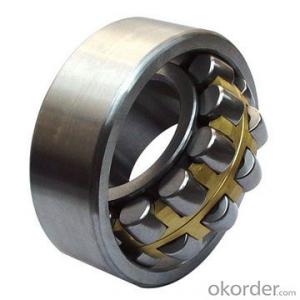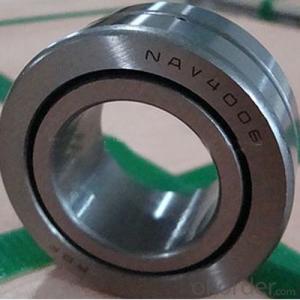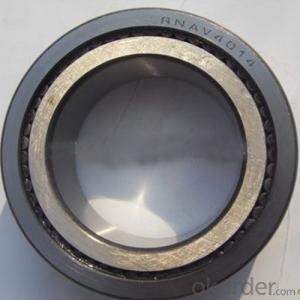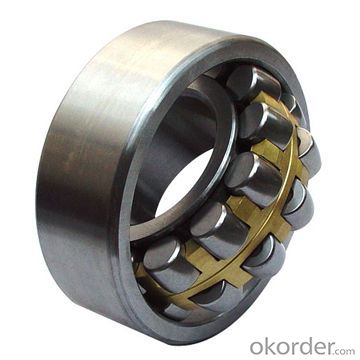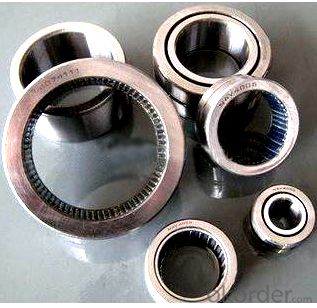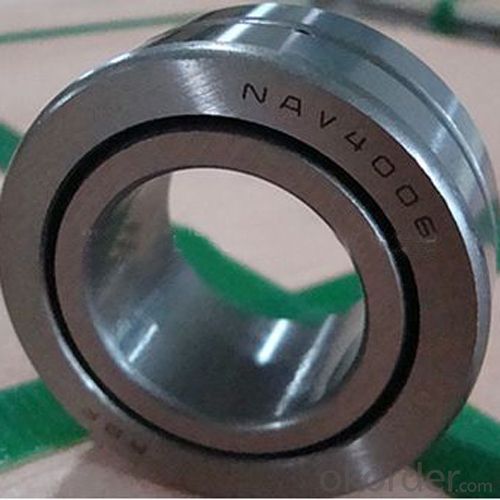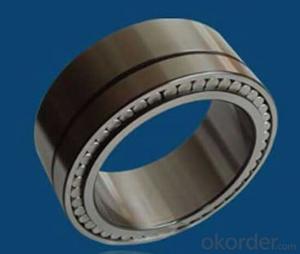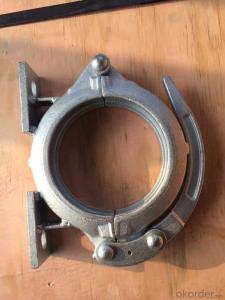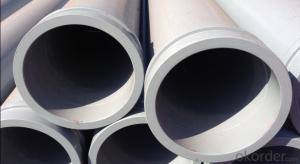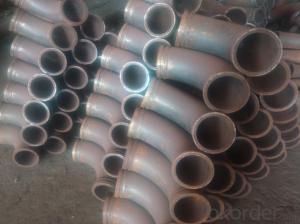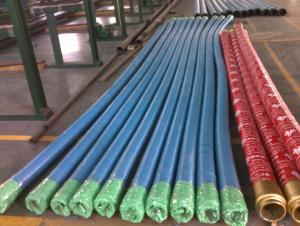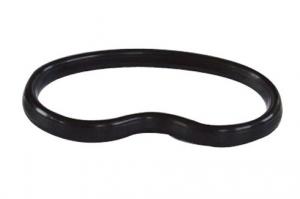Full Complement Needle Roller Bearing HRC60
- Loading Port:
- Shanghai
- Payment Terms:
- TT OR LC
- Min Order Qty:
- 1 pc
- Supply Capability:
- 1000 pc/month
OKorder Service Pledge
OKorder Financial Service
You Might Also Like
Product information:
As for the full complement needle roller bearing with inner ring,the outer ring has the oil hole.The lubricating oil can be fed in from the oil hole. The outer ring has the double shoulders. As for the full complement needle roller bearing without inner ring,since the inner ring has no shoulder and cage,the inner ring,outer ring,complete set of needles can be mounted respectively.It is s suitable for parts of which the radial size is limited.The surface of shaft journal fitted with it is acted directly as rolling surface.
Size:
NAV4914
NAV4014
NAV4015
NAV4916
NAV4016
NAV4017
NAV4918
NAV4919
NAV4920
NAV4832
Salient features:
It is requested that the surface hardness be no less than HRC60,surface roughness,no more than 0.63μm. This kind of full complement bearing, with inner ring or without inner ring,does not limit the axial shift of shaft and housing.
Since this kind of bearing has no cage,the needles rotate without correct guiding,they rub heavily against each other and the bearing has the low limiting rotational speed.
Advantages of our products:
Premium quality
· Prompt delivery & seaworthy packing (5-10 days)
Reliable performance
Easy to weld
High safety.
· Professional Service
· Competitive pricing
Measuring of wall thickness from the outside
Low purchase cost
FAQ:
Q1: How long about delivery time?
A1: Normally we keep the raw materials for old customers and sometime we also keep stock products to make sure delivery time in any emergency cases.
Q2: How do we guarantee the quality of our pipes?
A2: We have established an advanced quality management system which conducts strict quality tests at every step, from raw materials to the final product. At the same time, we provide extensive follow-up service assurances as required.
Q3: How soon can we receive the product after purchase?
A3: Within three days of placing an order, we will book the vessel for goods. The specific shipping date is dependent upon international and government factors, but is typically 7 to 30 workdays.
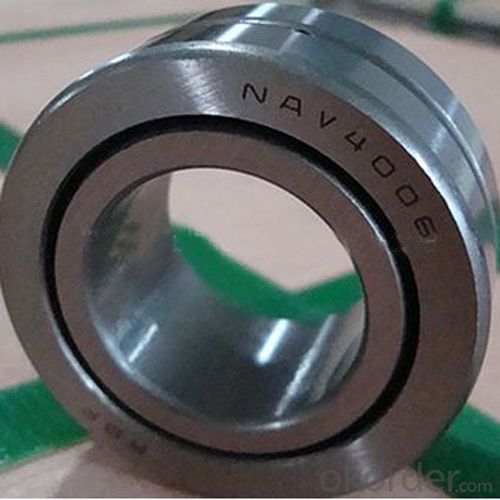
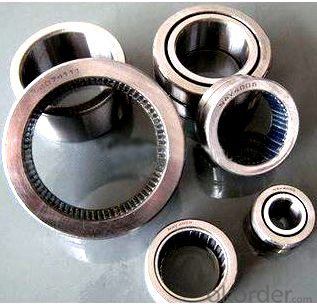
- Q: What is the function of a concrete pump hydraulic filter?
- The function of a concrete pump hydraulic filter is to remove contaminants and impurities from the hydraulic fluid that is responsible for operating the pump. The hydraulic filter is designed to capture particles such as dirt, debris, and metal fragments that may be present in the hydraulic system. By removing these contaminants, the filter ensures that the hydraulic fluid remains clean and free from any potential damage-causing particles. This helps to maintain the overall performance and longevity of the concrete pump by preventing clogs, wear and tear, and potential damage to the pump's hydraulic components. Additionally, a clean hydraulic system reduces the risk of hydraulic fluid leakage, which can lead to costly repairs and downtime. Therefore, the concrete pump hydraulic filter plays a critical role in ensuring the efficiency, reliability, and durability of the pump's hydraulic system.
- Q: Can concrete pump spare parts be customized for specific pump models?
- Yes, concrete pump spare parts can be customized for specific pump models. Different pump models may have varying specifications and requirements, so it is essential to have spare parts that are specifically designed and tailored to fit the unique needs of each pump model. Customized spare parts ensure optimal performance, efficiency, and compatibility with the specific pump model, ultimately enhancing the overall functionality and lifespan of the pump.
- Q: What are the indications of a damaged concrete pump boom?
- There are several indications that can point to a damaged concrete pump boom. These indications can include: 1. Visual damage: One of the most obvious signs of a damaged concrete pump boom is visible physical damage. This can include cracks, dents, or deformities in the boom structure. Any signs of structural damage should be taken seriously as they can compromise the integrity of the boom. 2. Leaks: Another indication of a damaged boom is the presence of leaks. If you notice hydraulic fluid or water leaking from the boom, it could be a sign of a damaged hose or fitting. Leaks can not only affect the performance of the pump but also pose a safety risk to the operator and those working around the equipment. 3. Misalignment: A damaged boom may also exhibit misalignment issues. If the boom is not straight or appears to be bent at an odd angle, it could indicate damage. Misalignment can affect the accuracy and efficiency of concrete placement, potentially leading to uneven or improper pouring. 4. Unusual noises: Strange or excessive noises during operation can be a sign of a damaged boom. Rattling, grinding, or squealing sounds can indicate loose or worn-out components, such as pins, bushings, or bearings. These noises should not be ignored, as they could worsen if not addressed promptly. 5. Reduced performance: A damaged boom may also result in reduced performance. If you notice a decrease in pumping capacity or difficulties in controlling the boom's movement, it could be an indication of damage. Poor performance can be caused by various issues, including hydraulic system problems, structural damage, or worn-out parts. In conclusion, it is crucial to regularly inspect and maintain concrete pump booms to identify any indications of damage. Promptly addressing these issues is essential to ensure the safety of operators, prevent further damage, and maintain the efficiency and performance of the equipment.
- Q: How to deal with the blockage in the outlet of the distributing valve of the concrete pump?
- If this method does not dare, it can only be manually removed, remove the connecting pipe, remove the debris in the valve.
- Q: What are the fittings of concrete pump?
- The commonly used electrical accessories (button switch, switch, trip circuit breaker, transformer terminals, etc.), hydraulic pipe
- Q: How can one identify the correct thread size and type for concrete pump spare parts?
- To identify the correct thread size and type for concrete pump spare parts, there are a few steps one can follow: 1. Refer to the equipment manual: The first step is to consult the manual or documentation that came with the concrete pump. It often contains detailed information about the thread sizes and types used for different parts. 2. Measure the existing part: If the manual is not available or does not provide the necessary information, one can take measurements of the existing part. Use a caliper or a thread gauge to measure the diameter and pitch of the thread. This will help determine the correct size and type needed for replacement. 3. Seek assistance from the manufacturer: If the manual or measurements do not provide satisfactory results, it is advisable to reach out to the manufacturer or supplier of the concrete pump. They have expert knowledge about the specific thread sizes and types used in their equipment and can guide you in finding the correct spare parts. 4. Consult industry standards: Depending on the region and type of concrete pump, there may be industry standards or norms that dictate the thread sizes and types used in these machines. Researching and referencing these standards can provide valuable insights into the correct specifications for spare parts. 5. Engage with experienced professionals: Another effective way to identify the correct thread size and type is to seek advice from experienced professionals in the concrete pumping industry. They may have encountered similar situations and can provide guidance based on their expertise. Overall, a combination of consulting equipment manuals, measuring existing parts, contacting the manufacturer, studying industry standards, and seeking advice from professionals can help in identifying the correct thread size and type for concrete pump spare parts.
- Q: Are there any specific guidelines for the storage and handling of concrete pump spare parts during transportation?
- Concrete pump spare parts must be stored and handled according to specific guidelines during transportation to ensure safety and efficiency, as well as minimize the risk of damage or loss. To begin, it is crucial to package and protect the spare parts properly. This entails using suitable materials like cardboard boxes, bubble wrap, or foam padding to prevent any physical harm during transit. The spare parts must be securely packed to prevent any movement or shifting during transportation. Furthermore, it is advisable to clearly label the packages with the contents and any specific handling instructions. This will aid transport personnel in correctly handling the spare parts and avoiding mishandling or confusion. Moreover, it is essential to select a trustworthy and experienced transportation service provider who specializes in delicate and sensitive items such as concrete pump spare parts. They should possess the necessary equipment, such as pallet jacks or forklifts, for safe handling and movement of the spare parts. During transportation, it is vital to ensure that the spare parts are loaded and secured properly in the transport vehicle. This may involve using straps, ropes, or other securing devices to prevent any movement or shifting of the packages. Regarding temperature control, it is important to consider the specific requirements of the spare parts. Some parts may be sensitive to extreme temperatures and necessitate special handling or climate-controlled transportation. Consulting with the manufacturer or supplier of the spare parts is crucial to determine any specific temperature or climate requirements. In conclusion, adhering to these guidelines will guarantee the secure and safe transportation of concrete pump spare parts, reducing the risk of damage or loss and ensuring their readiness for use upon arrival at their destination.
- Q: Can concrete pump spare parts be purchased online?
- Yes, concrete pump spare parts can be purchased online. There are various online platforms and websites that specialize in selling construction equipment and spare parts, including concrete pump spare parts. These online stores offer a wide range of options and brands, allowing customers to browse and select the specific spare parts they need for their concrete pump. Additionally, online purchasing provides the convenience of comparing prices, reading customer reviews, and having the spare parts delivered to your doorstep. However, it is essential to ensure the authenticity and reliability of the online store before making a purchase to ensure that you are getting genuine and high-quality spare parts.
- Q: How often should concrete pump control levers be inspected and replaced?
- Concrete pump control levers should be inspected regularly to ensure they are in proper working condition. The frequency of inspections and replacements will depend on several factors such as the amount of usage, environmental conditions, and the quality of maintenance performed on the equipment. As a general guideline, control levers should be inspected at least once a year. This inspection should include a thorough examination of the lever mechanism, checking for any signs of wear, damage, or malfunction. Additionally, it is recommended to inspect the levers after any major repair or maintenance work to ensure they have been properly reinstalled and are functioning correctly. If any issues are found during the inspection, it is crucial to address them promptly. Depending on the severity of the problem, repairs or replacements may be necessary. Minor repairs can often be done on-site, while more significant issues may require the assistance of a professional technician. It is important to note that regular maintenance, including lubrication and cleaning, can help extend the lifespan of the control levers. Following the manufacturer's guidelines for maintenance and usage can also help prevent premature wear and damage. Ultimately, the frequency of inspections and replacements may vary depending on the specific circumstances. It is always best to consult the equipment's manual or manufacturer for specific recommendations regarding the control levers' maintenance and replacement.
- Q: How can one determine the correct voltage and current rating for electrical components in concrete pump spare parts?
- Several factors must be considered when determining the appropriate voltage and current rating for electrical components in concrete pump spare parts. The first step is to consult the manufacturer's specifications and documentation for both the concrete pump and its spare parts. These documents typically provide detailed information on the voltage and current requirements for each electrical component. It is important to closely follow these guidelines to ensure that the components are operated within their intended parameters. Next, it is crucial to have a thorough understanding of the electrical system and its requirements. This involves analyzing the power supply available at the site where the concrete pump will be used. Factors such as the voltage level (e.g., 110V, 220V, 440V) and frequency (e.g., 50Hz, 60Hz) of the electrical supply must be taken into account. Additionally, the maximum current capacity of the electrical system should be considered to avoid overloading. Furthermore, it is advisable to assess the specific application and operating conditions of the concrete pump. Different components may have varying voltage and current requirements depending on their function and the environment in which they are used. For example, components installed outdoors may require higher voltage ratings to withstand harsh weather conditions. Lastly, seeking assistance from qualified electricians or engineers is highly recommended. They have the expertise and knowledge to accurately determine the voltage and current ratings for electrical components in concrete pump spare parts. Their experience allows them to consider various factors, including safety regulations, compatibility with the existing electrical system, and any specific requirements from the concrete pump manufacturer. By considering the manufacturer's specifications, understanding the electrical system, evaluating the application and operating conditions, and seeking professional advice, one can effectively determine the appropriate voltage and current rating for electrical components in concrete pump spare parts.
Send your message to us
Full Complement Needle Roller Bearing HRC60
- Loading Port:
- Shanghai
- Payment Terms:
- TT OR LC
- Min Order Qty:
- 1 pc
- Supply Capability:
- 1000 pc/month
OKorder Service Pledge
OKorder Financial Service
Similar products
Hot products
Hot Searches
Related keywords
